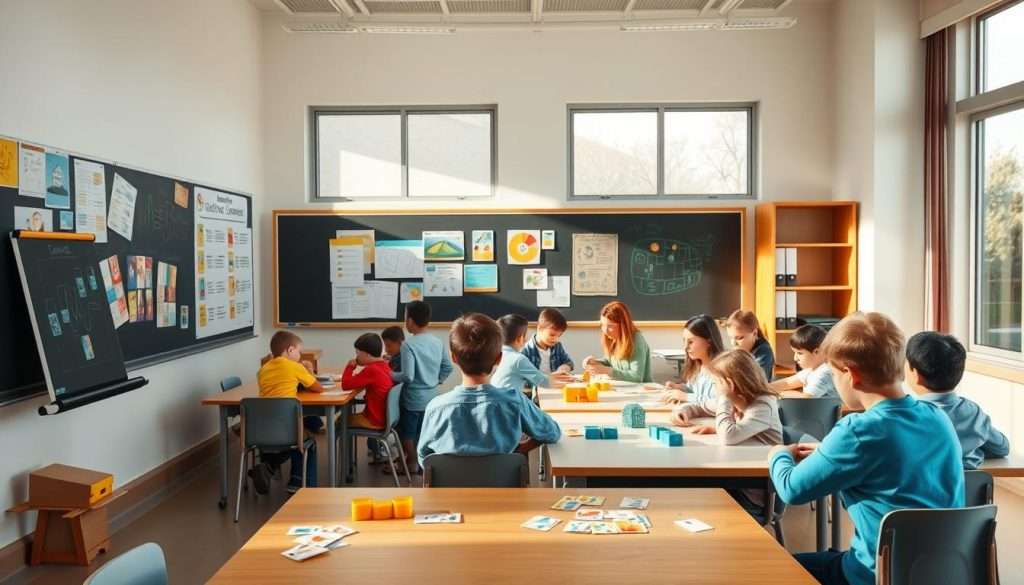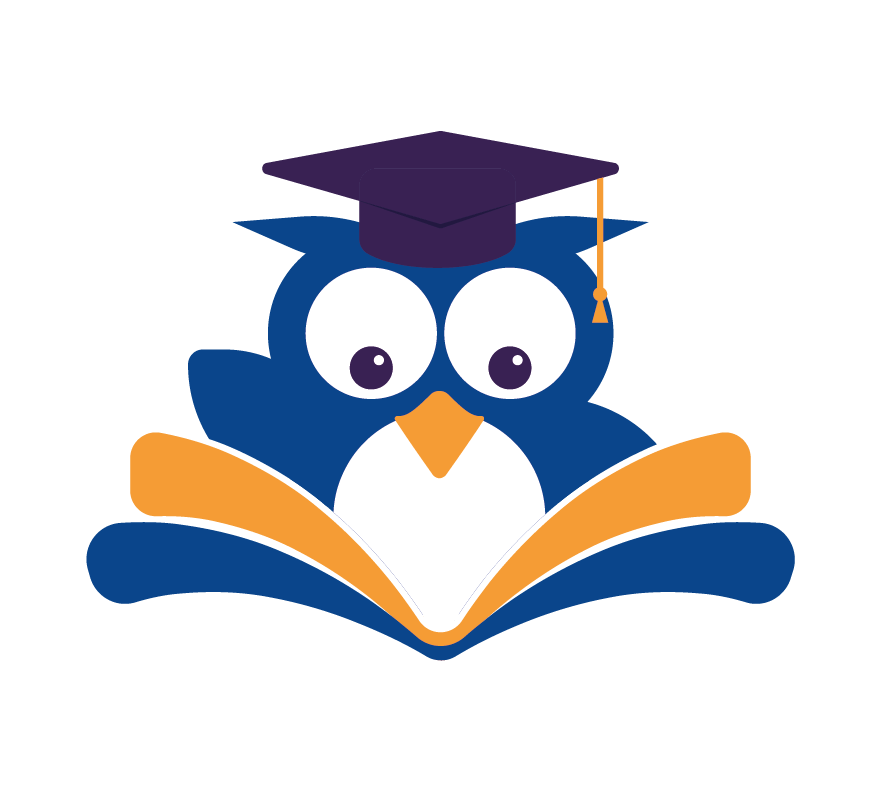Ever thought about how you can learn new things better? Our brains are amazing at processing new data. But, how we learn can really differ from one person to another.
Maybe you learn best by reading, listening, watching, or doing things yourself. Finding out what works for you can change everything. It’s all about discovering what’s best for you!
When you find your perfect learning method, learning becomes more fun and easy. It’s time to reach your full potential!
Key Takeaways
- Knowing your learning style can really improve your learning experience.
- Personalized learning helps you remember things better.
- Finding your ideal learning method makes learning more fun.
- People learn in different ways, like reading, listening, or doing things themselves.
- Educational psychology backs the idea of learning that fits you.
The Science Behind Effective Learning
Learning well is not just about trying hard. It’s about using a smart plan that fits how you think. By knowing how our brains work, we can study better and get better results.
How Your Brain Processes Information
Our brains are amazing at handling information in many ways. This is because of multiple intelligences and our own learning styles. Studies show that learning in a way that suits you best makes you remember and understand more.
- The brain handles visual, auditory, and kinesthetic info differently.
- Learning that fits you can make you more engaged and motivated.
- Knowing your cognitive style helps you study smarter.
The Impact of Personalized Learning Approaches
Personalized learning is more than a trend; it’s proven by science. By making study plans that match your learning styles, you can see many benefits. These include better grades and more confidence.
- Studying in a way that plays to your strengths can improve your learning.
- Custom learning plans can help you manage time better and feel less stressed.
- Accepting different cognitive styles makes learning more welcoming for everyone.
Understanding Different Learning Styles
Figuring out your best learning style can really help you learn more. Knowing how you learn best lets you study in ways that stick with you longer.
The VARK Model Explained
The VARK model sorts learners into four main types: Visual, Auditory, Reading/Writing, and Kinesthetic. It helps people find out what they like to learn best.
Visual, Auditory, Reading/Writing, and Kinesthetic Preferences
Now, let’s look at what each style likes:
- Visual learners like diagrams, charts, and pictures to get ideas.
- Auditory learners do well with listening to talks, discussions, and audio.
- Reading/Writing learners are good at reading texts, taking notes, and summarizing.
- Kinesthetic learners learn best by doing things, like experiments and hands-on activities.
Multimodal Learning: When You Have Multiple Preferences
Some people don’t just fit one style; they’re multimodal learners. They might like both visual and kinesthetic learning. This means they do well with diagrams and also enjoy doing things by hand.
How to Identify Your Primary Learning Style
Figuring out your primary learning style can change how you learn and study. We’ll guide you through identifying your dominant style. This makes learning and retaining information easier.
Self-Assessment Techniques and Questionnaires
Using self-assessment techniques and questionnaires is a great way to find your learning style. These tools show how you see and process information. The VARK model is a well-known method for this.
Taking the VARK Assessment
The VARK assessment is a simple quiz to find your learning style. It asks questions to see if you’re a visual, auditory, reading/writing, or kinesthetic learner. You can do it online and it only takes a few minutes.
Interpreting Your Results
After finishing the VARK assessment, you get a profile of your learning style. It’s important to understand what your results mean. For example, if you’re a visual learner, you learn best from images, diagrams, and videos.
Analyzing Your Past Learning Successes
Another way to find your learning style is by analyzing your past learning successes. Think about times when you learned something new and kept it. What methods did you use? Were you watching videos, listening to podcasts, or taking notes? Looking back can give you insights into your learning preferences.
Recognizing Learning Preferences in Everyday Activities
You can also find your learning style by recognizing your preferences in everyday activities. For example, do you like watching instructional videos or reading manuals? Do you prefer group discussions or working alone? Seeing these patterns can help you understand how you learn best.
Ready to find your ideal learning style? Find out what J-KAV™ learning style is the best fit for you. Just click the button below to start the free learning style quiz. No email or registration required.
Optimizing Study Techniques for Visual Learners
Visual learning is a strong way to learn and remember things. There are many ways to make your study sessions better. As someone who learns visually, you’ll find it helpful to use images, diagrams, and other visual tools.

Making the Most of Mind Maps and Visual Organizers
Mind maps and visual organizers are great for visual learners. They make it easy to organize and remember information. By making a visual map of your notes, you can see how different pieces of information connect.
- Start with a central idea or concept.
- Branch out to related topics or subtopics.
- Use colors and symbols to highlight important information.
Effective Color-Coding and Highlighting Strategies
Color-coding and highlighting are simple but effective for visual learners. Using different colors helps you quickly spot important information. This way, you can tell main ideas from supporting details.
For example, use one color for definitions, another for key concepts, and a third for examples or illustrations.
Leveraging Video-Based Learning Resources
Videos are a fantastic resource for visual learners. They make learning fun and engaging. You can find educational videos on many topics, from online courses to YouTube tutorials.
When watching videos, take notes on important points. Summarize the main ideas in your own words.
Creating Visual Memory Aids
Visual memory aids like flashcards and diagrams help solidify your learning. By linking new information to images or visual cues, you can remember it better.
Try making flashcards with key terms on one side and definitions or explanations on the other. You can also use diagrams to show complex concepts or how different pieces of information relate.
Effective Strategies for Auditory Learners
If you remember better from lectures, you’re likely an auditory learner. Hearing information helps you learn a lot. Let’s look at some strategies to improve your learning.
Recording and Listening to Lectures
Recording lectures and listening to them later is very helpful. It lets you review complex topics when you want. Always ask your teacher before recording lectures. You can use digital recorders or apps on your phone. Listen to them while you’re on the go, making studying easier.
Group Discussions and Verbal Repetition
Joining group discussions is great for auditory learners. It helps you see different views and remember information better. Get involved in class talks or study groups to discuss topics with others. This way, you learn more and remember it better.
Podcasts and Audio Learning Resources
Podcasts are great for learning many subjects. As an auditory learner, listening to educational podcasts can help a lot. Choose podcasts that are interesting and match your studies. Listen to them on your way to school, while doing chores, or during exercise.
Teaching Concepts to Others
Teaching what you know to others helps you remember it better. Explaining topics to your friends or classmates solidifies your understanding. This also improves your speaking skills. Start study groups where everyone teaches each other something new.
Using these strategies can make your studying more effective. The most important thing is to stay involved and use all the resources you can.
Hands-On Approaches for Kinesthetic Learners
We know that kinesthetic learners thrive when they’re actively engaged. So, let’s explore some practical strategies for making learning a hands-on experience.
Kinesthetic learning is all about engaging with the material through physical activities and experiments. This approach not only makes learning fun but also enhances retention. Hands-on experiments allow you to interact with the subject matter directly, making complex concepts more tangible.
Learning Through Physical Activities and Experiments
Engaging in physical activities and experiments is key for kinesthetic learning. By participating in science experiments, you can observe chemical reactions firsthand. This makes the learning experience more memorable. Interactive simulations can also provide a similar hands-on experience, even in a virtual setting.
Note-Taking Techniques for Movement-Based Learners
For kinesthetic learners, traditional note-taking methods might not be enough. Techniques like typed notes on a laptop while walking or using a digital stylus can incorporate movement. You can also try standing or pacing while reviewing your notes to keep your body engaged.
Creating Models and Using Manipulatives
Using manipulatives such as 3D models or puzzles can help kinesthetic learners understand complex structures. For example, building a model of a historical monument or a molecular structure can provide a deeper understanding of its composition and functionality.
Incorporating Movement Breaks in Study Sessions
Incorporating short movement breaks during study sessions can significantly boost focus and retention. Simple activities like stretching, jumping jacks, or even a short dance break can re-energize your study session.
| Kinesthetic Learning Technique | Description | Benefit |
|---|---|---|
| Hands-on Experiments | Direct interaction with subject matter | Enhanced retention and understanding |
| Movement-Based Note-Taking | Typed notes while walking or using a digital stylus | Incorporates physical movement into learning |
| Using Manipulatives | 3D models, puzzles, etc. | Deepens understanding of complex structures |
Adapting to Online Learning Based on Your Style
Online learning is flexible, but it works best when it fits your learning style. As we explore digital learning, finding the right tools and methods is key. These should match how you learn best.
Digital Tools for Different Learning Styles
The digital world has many resources for different learners. Whether you learn best through seeing, hearing, reading, or doing, there’s something for you. These tools can make online learning more effective.
Apps and Software for Visual Learners
Visual learners can use tools like MindMeister or Google Workspace graphic organizers. These help turn complex info into easy-to-understand visuals.
Resources for Auditory and Kinesthetic Learners
Auditory learners might like Apple Podcasts or Otter.ai for listening to lectures. Kinesthetic learners can try interactive simulations and labs from PhET Interactive Simulations.
Tools for Reading/Writing Preferences
For those who love reading and writing, apps like Evernote or OneNote are great. They help organize notes, highlight key points, and even let you work with others.
Creating an Optimal Virtual Learning Space
Your digital learning space is as important as your physical one. Make sure it’s organized and free from distractions. Use virtual desktops or browser extensions to stay focused.
Balancing Screen Time with Your Learning Preferences
Technology is great for learning, but don’t forget to balance it. If you’re a kinesthetic learner, add physical activities or breaks to your study time. This keeps your mind active.
Combining Multiple Learning Styles for Maximum Retention
Using different learning styles can greatly improve how well you remember things. We often stick to one style, but mixing others can make learning more effective. This mix can lead to better understanding and retention.

Creating Multi-Sensory Learning Experiences
Multi-sensory learning uses more than one sense to learn. For example, you might watch a video (visual) first, then listen to a podcast (auditory) about it. Finally, you could do a hands-on activity (kinesthetic) related to the topic. This way, you’re making learning more engaging and memorable.
By using different senses, you’re enriching your learning experience. It helps your brain in many ways, making information stick better.
Adapting Study Methods to Different Subjects
Each subject might need its own learning style. For example, learning a language often involves speaking and listening (auditory and kinesthetic). On the other hand, studying history might work better with visual aids like timelines and mind maps.
By adapting your study methods to the subject, you can learn more effectively. This approach helps you retain information better.
Conclusion: Embracing Your Learning Style for Lifelong Growth
Knowing how you learn best is crucial for reaching your full potential. By finding your ideal learning style, you can make your study plans better. This helps you choose the right path for your education and enhances your learning journey.
Learning in a way that suits you is more than just doing well in school. It’s about developing a lifelong love for learning. When you learn in a way that feels natural, you stay motivated. You also keep information better and enjoy growing personally.
Understanding your learning style lets you control your education. Whether you’re a visual, auditory, or kinesthetic learner, or a mix, you can adjust your study methods. This makes learning more effective and fun.
Remember, personalized learning is a key to reaching your goals. By embracing your unique learning style, you’re ready to face education’s challenges. This sets you up for a lifetime of growth and success.

